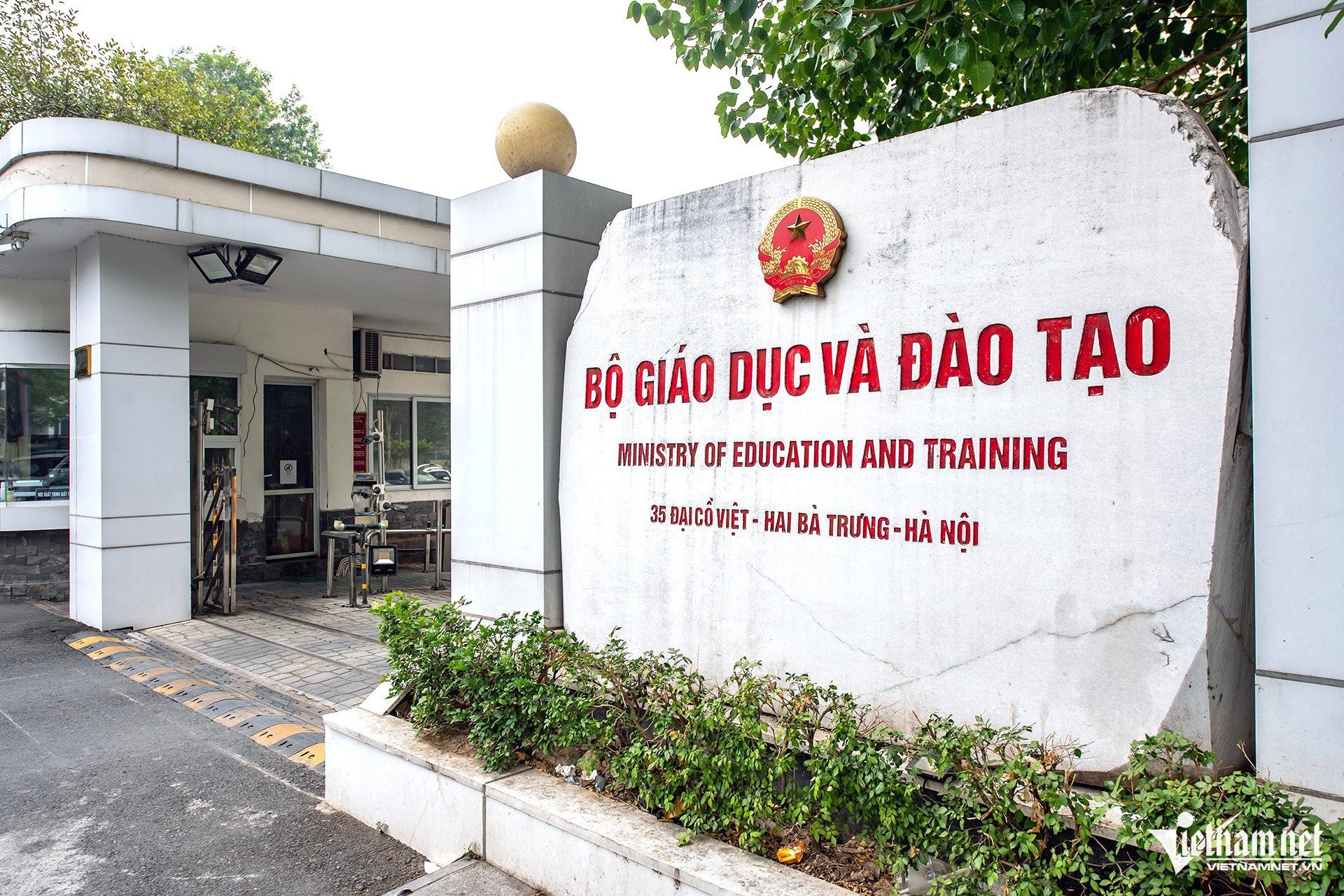
At the highest management level, MOET has confirmed that in 2025, it will rigorously carry out the restructuring and streamlining of the organizational structure while reallocating civil servants, public employees, and contract workers. The Ministry will also proactively explore options for receiving new personnel and units under its management.
According to a draft decree on the functions, tasks, powers, and organizational structure of the Ministry of Education and Training, the planned structure will have 19 units, reducing four units from the current number.
The five units that will be eliminated are: the Department of Physical Education, the Department of Ethnic Education, the Department of Continuing Education, the Department of Facilities, and the Department of Science, Technology, and Environment.
The National Universities also begin to streamline their operations according to central government policy.
Professor Le Quan, Director of Hanoi National University, stated that streamlining operations is a complex and sensitive task but is necessary to avoid overlapping functions, reduce resource wastage, and improve work effectiveness.
The management board of Hanoi National University and heads of some units have announced plans to reduce 35-40% of the departments and 15% of the staff.
The University of Foreign Languages has also proposed cutting 44% of its units. Additionally, Hanoi National University will become 100% financially self-sufficient starting in 2026.
Associate Professor Vu Hai Quan, Director of Ho Chi Minh City National University, shared that the university has completed its restructuring plan.
For its affiliated units, Ho Chi Minh City National University has merged the French University Center with the Institute of International Training, integrated the English Testing Center with the Testing and Training Evaluation Center, and merged the Water Management and Climate Change Center with the Institute of Environment and Resources.
The university has also consolidated three units - the Institute of International Training, the Pre-Doctoral Training Center, and the Institute of University Management - into the Institute of Training and Research on University Management, later renamed the Institute for Leadership Development at Ho Chi Minh City National University. The John Von Neumann Institute will be transferred to the University of Science for management.
For functional departments, the Undergraduate Department and the Graduate Department have been merged into the Training Department, and the Department of Emulation and Rewards has been integrated into the Organization and Personnel Department.
The Director of Ho Chi Minh City National University also noted that between 2025 and 2030, the university will continue to streamline its operations.
This restructuring addresses three main objectives: reducing administrative layers to ensure efficiency; increasing the number of self-financed units to reduce reliance on state funding and the number of employees on the state payroll; and ensuring stable, continuous, and effective operations in education, research, and community service.
In this process, Ho Chi Minh City National University will reduce its internal management units by 36%, increase its self-financed units from 66% to 92%, and reduce the number of personnel on the state payroll to just 8%, about 500 people.
The proposal also assigns financial-autonomous units to take the lead in developing plans for reducing administrative units. Specifically, financially autonomous member universities will reduce 15-35% of their departments, and autonomous units will reduce 10-20%.
Other universities are also restructuring to improve efficiency.
The University of Social Sciences and Humanities – Hanoi National University will reduce its number of departments from 46 (including 16 administrative units, 18 training units, 10 research centers, and 2 other units) to 30, achieving a 34.7% reduction.
The university’s leadership stated that significant changes include merging similar units and discontinuing those no longer relevant; reallocating some unit functions to align with training and direct support for programs, ensuring consistency with the university’s long-term development strategy.
The Anthropology Department will merge with the Religious Studies Department to form the Department of Anthropology and Religious Studies.
The Organization and Personnel Department will be combined with the Party Committee Office, and the new department will be named the Organization and Personnel Department.
Other functional offices, such as the University Council Office, Trade Union Office, Youth Union and Student Association Office, and the Veterans’ Association Office, will be merged into the University Council and Mass Organization Office.
Ho Chi Minh City University of Transport will eliminate its intermediary structures, disband 45 departments to comply with the Higher Education Law, and merge academic faculties into management institutes, reducing from 14 faculties to 7 institutes. The university will also dissolve the administrative offices (14 units) and transfer these responsibilities to the Training Department.
With this restructuring, Ho Chi Minh City University of Transport will reduce its internal departments by 11, from 39 to 28, achieving a nearly 30% reduction. The university’s leadership has stated that further restructuring and streamlining efforts will continue.
In addition to streamlining, some universities and colleges are also merging.
At the end of 2024, the Prime Minister decided to merge Hai Duong Medical College, under the Hai Duong Provincial People's Committee, with the Hai Duong University of Medical Technology under the Ministry of Health.
The Nghe An Pedagogical College was also approved for merger with Nghe An University of Economics, which will be renamed Nghệ An University and fall under the management of the Nghe An Provincial People's Committee.
Thanh Hung